In the digital media and entertainment space, Netflix Success Story is a formidable rival, but it remains a force to deal with. According to Statista, the streaming service that charges a subscription has more than 23 million users and generated over $8 billion in revenue during the first quarter of 2023. With those huge numbers to contend with, the company has no plans to slow down.
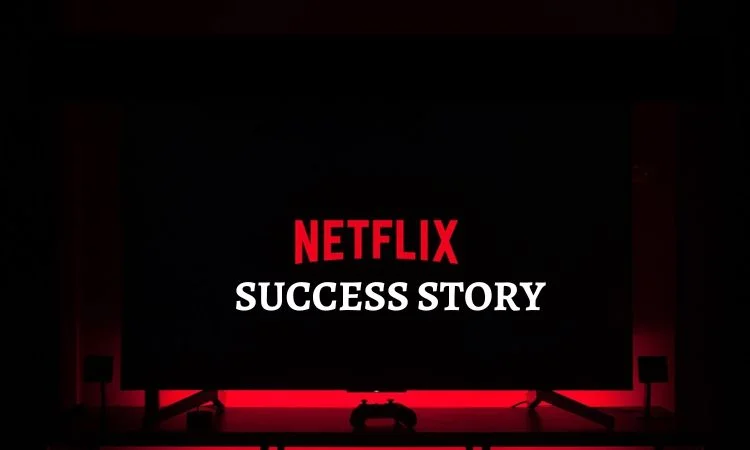
Source: The Brand Hopper
Its growing popularity can be seen from the content it has produced over the years, which includes Money Heist, Bridgerton, Stranger Things, Downton Abbey, The Crown, Tiger King, and Squid Game.
When Reed Hastings and Marc Randolph launched Netflix (formerly called Kibble) in 1997, it seemed to be nothing more than a small DVD rental company whose mail-order component was its only significant selling point.
How Netflix started
Founded in 1997 by two serial entrepreneurs, Reed Hastings and Marc Randolph, Netflix began streaming on April 14, 1998, as the world’s first online movie rental service, with just 30 staff members and 925 DVDs.
At first, Netflix operated just as a pay-per-rent DVD rental service by mail. Back then, customers could order movies from the Netflix website, and after paying a rental fee of $4 and shipping costs of $2, they would receive the DVDs in the mail. They used to just mail the DVDs back to Netflix in the appropriate envelopes after they had done watching them.
History of Netflix: Original Programming
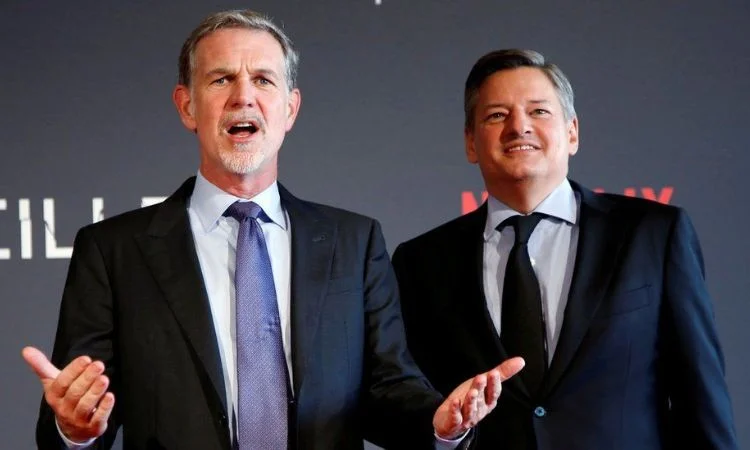
Source: Failure Before Success
2011 saw the start of its strategy to set itself apart from competing services. With the 2013 premiere of House of Cards, Netflix’s first original series, the streaming service began allocating funds for original content. A vital part of the Netflix business model is now Netflix Originals. By reducing its reliance on film and television studios, the corporation could gain more control over the content providers in its supply chain and cultivate a devoted fan base thanks to the original content strategy. Other over-the-top (OTT) providers would also follow Netflix’s initial projects, including To increase their appeal, businesses like India-based Hotstar and Amazon Prime Instant Video invest in unique content.
Netflix uses its content recommendation algorithms to determine which TV series to license. Their analytics team considers some things, such as the level of popularity of the category, the popularity of an actor or director, and even the computation of reactions to comparable content that is comparable. Netflix’s economic strategy does not depend on immediate ticket sales, therefore the measure of a successful series is whether or not its subscribers watch it, as well as whether or not it can garner a devoted fan base. The first original license that the corporation held was for House of Cards. According to the story, Netflix analyzed data regarding the number of individuals who rented the DVD.
Netflix acquired two seasons of the series at a total cost of $100 million after realizing that a sizable portion of its members would certainly watch it. Ted Sarandos, the president of programming at Netflix, led this risk, believing that if the show could attract even a tiny, devoted audience, Netflix’s network effects would provide sufficient advertisement and audience. Netflix’s content strategy is based on the notion of producing material for various interest groups, where interest is defined in a much broader and cross-category manner.
In 2015, the firm signed a six-film contract with Adam Sandler. After receiving mostly negative reviews for its first movie under the partnership, The Ridiculous 8, Sarandos argues that the film is important for Netflix customers since so many people are watching it on the platform. The streaming video service certainly experienced some setbacks lately. Two well-known programs, Get Down and Marco Polo, were canceled because they were unable to gain a sufficient number of viewers. The company’s original content strategy is crucial as it grows internationally. To break into other markets, it must promote content that appeals to regional tastes.
Netflix Success- Story Behind the Name
Kibble was the name of the original Netflix. Marc Randolph, a co-founder of Netflix, verified this to Fortune Magazine. Kibble was founded on the premise that a product cannot succeed until “the dogs eat the dog food.” Eventually, they decided to rebrand their company as Netflix, a play on two important terms, Net & Flicks, which sums up their entire business strategy. Since the intention was to provide services via the Internet, the word “Net” was derived from the word “Internet.” Additionally, Flix is a hip re-spelling of Flick, which denotes a motion picture. The brand name Netflix was formed by combining these two terms to provide movies from theaters online.
About Netflix
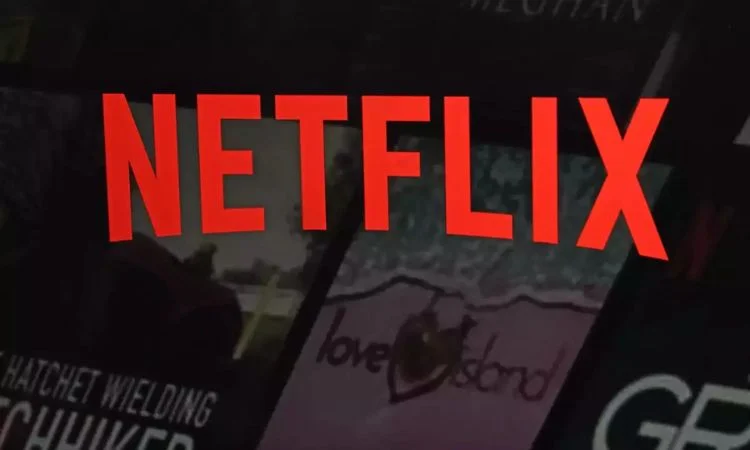
Source: The Economic Times
Netflix has transformed the way we watch media in the digital age and eliminated the inconvenience of going to video stores.
When Netflix first started, customers could choose the movies they wanted, and the DVDs would be sent to them—usually the next business day. Netflix creates its digital content as well.
Numerous gadgets, including PCs, smartphones, tablets, Blu-ray Disc players, video game consoles, and smart TVs, can be used to watch Netflix.
- Starting small
At first, Netflix operated on a pay-per-rent business and employed 30 people in addition to having 925 titles.
They unveiled the monthly subscription plan in September 1999.
One might borrow multiple DVDs and avoid the hassles of late penalties, shipping costs, and due dates by subscribing to this model.
By the year 2000, Netflix gained 300,000 subscribers, thanks to its excellent service.
- IPO
Netflix held its initial public offering (IPO) on May 29, 2002, with each share selling for US$15.00.
Marc Randolph departed from Netflix in 2004.
According to its popularity at the time, Netflix had 35,000 titles and was shipping one million DVDs per day by 2005.
- Facing Rejection
In 2000, despite adding 300,000 new members, Netflix was losing money.
Thus, Reed Hastings made a fifty-million-dollar bid to sell Netflix to Blockbuster.
Additionally, he offered to keep running Netflix’s web operation and rename it Blockbuster.com.
But Blockbuster turned down this proposal.
In 2003, Netflix started turning a profit.
- Video Streaming Services
Although Netflix had intended to launch its online video streaming service in 2005, it was postponed until 2007. The capability to transmit video over the internet was provided.
Depending on the subscription option, the content was initially limited to 6 to 18 hours each month.
Being the pioneer in the online video streaming space, Netflix was able to sign numerous exclusive contracts with various media firms.
On October 1, 2008, a 20 million dollar deal was reached with Starz, an American premium cable and satellite television network.
- Hulu and Amazon
Beginning in 2010, Hulu and Amazon, who both offered the Hulu Plus service and Amazon Prime Video, posed a serious threat to Netflix.
- Creating Original Content
The cable networks, which at first relied on each other’s material before expanding to create their original programming, served as an inspiration to Reed Hastings.
Reed Hastings wanted to create his original material back in 2005 when Netflix was still a small business, but he was unable to do so because the company was still distributing DVDs at the time.
Netflix decided to create original content in 2011 since the expense of obtaining a license was increasing.
The political thriller House of Cards, Netflix’s debut production, was revealed on March 15, 2011.
What makes Netflix so Successful?
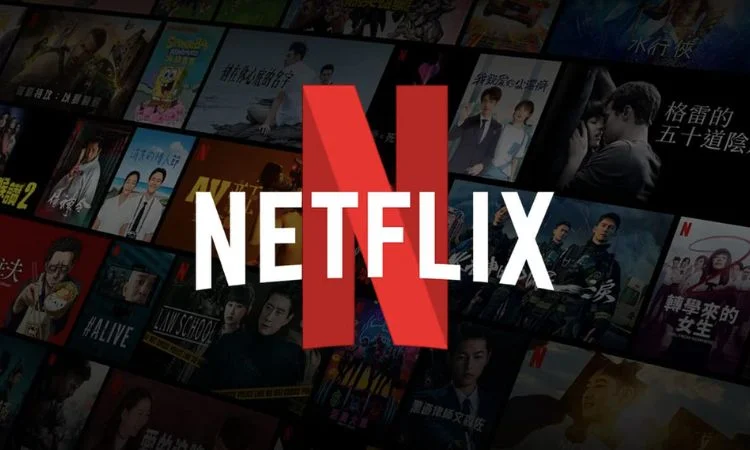
Source: Linkedin
Essentially, Netflix’s success originates from its capacity to change and how quickly it does so. Its capacity to shift course has allowed its marketing strategy to depart from established ideas like “ad spending not resulting in more viewers.”
Technology is another key component that promotes success. The main goal of Netflix’s recommendation system was to promote personalization. Making sure users receive material they are interested in and desire is its main objective. For each consumer, this necessitates the establishment of a customized customer journey and data collecting. That’s no easy task.
The content is another important factor. Netflix makes significant financial investments in original programming. This commitment and vision have seen it produce successful television programs that are nominated for and win Grammys, Oscars, Emmys, BAFTAs, SAGs, and Golden Globes.
| Year | Revenue |
| 2014 | 5.50 B |
| 2015 | 6.78 B |
| 2016 | 8.83 B |
| 2017 | 11.69 B |
| 2018 | 15.79 B |
| 2019 | 20.16 B |
| 2020 | 25.00 B |
| 2021 | 29.70 B |
| 2022 | 31.62 B |
| 2023 | 33.72 B |
Netflix Marketing Strategy
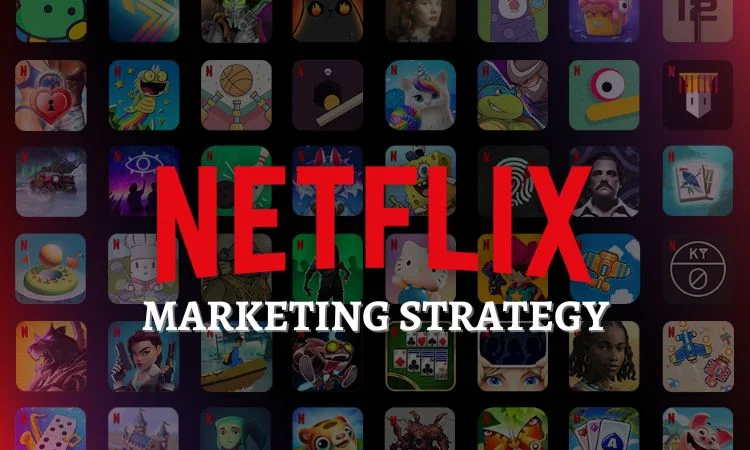
Source: About Netflix
The business is increasing rapidly thanks to innovation and the application of cutting-edge technology in marketing. The business is connecting with the public on social media channels in an efficient manner. Nearly every nation has a YouTube account or Instagram page where the administrator shares pertinent stuff related to the content they stream. Netflix has more than 19.5 million subscribers on its official YouTube account.
Additionally, Netflix Inc. is looking at the possibilities of email marketing to learn more about what the needs of its customers are.
Future of Netflix
Even if Netflix went through some difficult times, did they end? The quick response is no. Numerous observers believe it has the power to steer the business for many years. Their actions and plans serve as evidence of this.
They invested $12 billion in 2018, an 88% increase from 2017, to develop their library of original movies and television shows. To attract and keep subscribers, the decision was made to stock its warehouse with original content. Almost 13% of former Netflix subscribers signed up again purely to watch Stranger Things season three. Stranger Things and Black Mirror are their top subscription draws and are the shows that viewers watch the most. After its premiere on July 4, Stranger Things 3 has been viewed on 40.7 million accounts, according to a tweet from Netflix.
With 148 million users in more than 190 countries, Netflix is currently the market leader in streaming.
Conclusion
Netflix is considered successful despite its abundance of amazing features because it puts its customers’ needs first. All of its subscribers will experience comfort and innovations as a result of the ongoing change. The secret to Netflix’s success is its business plan for keeping users addicted to the streaming service. The three main pillars of Netflix’s business strategy are data-driven personalization, content creation and acquisition, and subscription-based pricing. The company’s relationships with telecom and cable providers, monthly membership fees, and content licensing are how it makes money.















